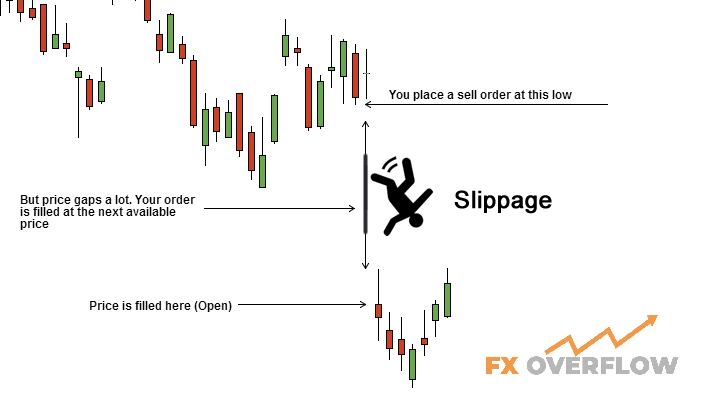Forex Spreads: Understanding the Difference Between Bid and Ask Prices in Currency Pairs
When it comes to forex trading, understanding the concept of "spreads" is essential for any investor looking to navigate the currency markets successfully. In this article, we'll delve into the intricacies of forex spreads, explaining what they are, how they work, and why they matter. So, let's begin our journey into the world of forex spreads and empower you with the knowledge to make informed trading decisions.
Table content
1. Introduction to Forex Spreads
2. How Forex Spreads Work
3. Why Forex Spreads Matter
4. Factors Affecting Forex Spreads
5. Strategies for Dealing with Forex Spreads
6. Footnote
1. Introduction to Forex Spreads
In the forex market, currencies are traded in pairs, and each pair has two prices: the bid price and the ask price. The spread refers to the difference between these two prices. The bid price represents the maximum price that buyers are willing to pay for a particular currency, while the ask price is the minimum price at which sellers are willing to sell the same currency. The spread, therefore, acts as a transaction cost in forex trading.

2. How Forex Spreads Work
Let's take a closer look at how forex spreads work with a practical example. Suppose you are interested in trading the EUR/USD currency pair, and the current bid price is 1.2000, while the ask price is 1.2005. In this scenario, the spread would be calculated as:
Spread = Ask Price - Bid Price Spread = 1.2005 - 1.2000 Spread = 0.0005 or 5 pips
Pips, short for "percentage in point," represent the smallest price movement that a given exchange rate can make based on market convention. They are crucial in determining profits and losses in forex trading. In this example, the spread is 5 pips.
3. Why Forex Spreads Matter
Understanding the significance of forex spreads is vital for traders for several reasons:
a. Transaction Costs
As mentioned earlier, the spread serves as a transaction cost. It is essentially the broker's profit in executing a trade. The tighter the spread, the lower the cost of entering and exiting a trade. Lower transaction costs can lead to more profitable trades, making it crucial for traders to seek brokers offering competitive spreads.
b. Market Liquidity
Forex spreads can also indicate the liquidity of a currency pair. Major currency pairs like EUR/USD and USD/JPY usually have tighter spreads because they are more actively traded and have higher liquidity. On the other hand, exotic currency pairs may have wider spreads due to lower trading volumes.
c. Impact on Profitability
The size of the spread directly affects a trader's profitability. To break even on a trade, the market price must move in the trader's favor by at least the size of the spread. Therefore, traders need to carefully consider the spread when opening and closing positions.
d. Slippage
During periods of high market volatility or low liquidity, the actual execution price of a trade may differ from the expected price due to slippage. This means that traders may experience additional costs beyond the advertised spread.
4. Factors Affecting Forex Spreads
Several factors can influence the size of forex spreads:
a. Market Volatility
Spreads tend to widen during times of increased market volatility. This can occur during major economic announcements, geopolitical events, or unexpected market shocks. During such periods, trading conditions may become less favorable, and spreads may temporarily widen.
b. Time of Day
Forex markets operate 24 hours a day, five days a week. The trading volume and liquidity can vary significantly depending on the time of day. Spreads may be narrower during peak trading hours when multiple financial centers are open simultaneously.
c. Economic Calendar
Traders should keep an eye on the economic calendar, as scheduled economic releases can impact spreads. High-impact news releases may lead to a temporary widening of spreads as traders react to new information.
d. Broker's Policies
Different brokers offer varying spreads based on their business models and market access. Some brokers offer fixed spreads, while others provide variable spreads that may fluctuate with market conditions.
5. Strategies for Dealing with Forex Spreads
Traders can adopt several strategies to manage forex spreads effectively:
a. Choose the Right Broker
Selecting a reputable broker that offers competitive spreads is crucial. Consider factors such as the broker's reputation, regulatory compliance, and the range of trading instruments available.
b. Stay Informed
Being aware of scheduled economic events and news releases can help traders anticipate potential spread fluctuations and make informed decisions.
c. Avoid Overleveraging
High leverage can amplify both potential profits and losses. Overleveraging can lead to significant account drawdowns, making it essential for traders to manage their positions carefully.
d. Utilize Limit Orders
Traders can use limit orders to enter trades at specific price levels, ensuring that they execute trades at their desired price, even during periods of high volatility.
6. Footnote
In Summary, understanding forex spreads is a fundamental aspect of successful currency trading. Spreads represent the transaction costs that traders incur and can significantly impact profitability. As traders, it is essential to select brokers with competitive spreads, stay informed about market events, and employ effective risk management strategies to navigate the forex market successfully. By incorporating these practices into your trading routine, you can increase your chances of making well-informed decisions and achieving long-term success in forex trading.












Discussion